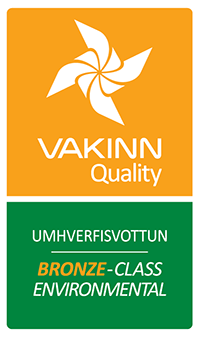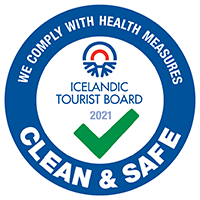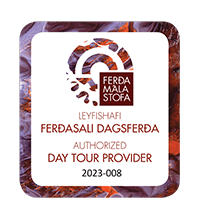Blog / Natural Wonders / How was Iceland made?
Jump to chapter
Like we said in our last post, Iceland is being pulled apart by the tectonic plates. What we didn’t mention was that this has been a theme of Iceland since the beginning of time itself.
There are about 130 volcanos in Iceland, of which 18 have erupted since the settlement in the 9th century. But in of those 130, only 30 are considered active volcanos. In this post, we will go through a few geology facts of Iceland and Iceland’s geology features. They will hopefully allow you to show off a little bit and explain the geology of Iceland’s rocks and landscapes!

Geology of Iceland
Iceland is on a so-called hot spot on Earth, which means that volcanos regularly have a party and erupt. Another place like that is the Hawaii islands.

Iceland began to form some 60 million years ago when the North Atlantic Ocean – or the tectonic plates – began to pull apart and enough lava piled up to make land. The volcanic zone of Iceland reaches from the Reykjanes Peninsula, over to Eyjafjallajökull and Mýrdalsjökull glaciers, then over the Icelandic highlands, where Landmannalaugar, Laki volcano and Bárðarbunga are and then up to Mývatn, where Krafla is and Húsavík.

Oldest Parts of Iceland
When the tectonic plates pull the country apart, the oldest rocks get pushed to the sides, and new rock gets formed in the middle. The ancient stones (in this case, mountains and sand) often crumble into the ocean. So, despite geologist knowing Iceland began forming some 60 million years ago, the oldest parts of the country are only 14-16 million years old.
The oldest mountains in Iceland are in the East and West Fjords. In South-East Iceland by Höfn in Hornafjörður some interesting geological things are happening. With Vatnajökull, the biggest glacier in Europe, melting at the rate that it is, you would think that the rising sea level would be the inhabitant’s biggest problem.
It is not so. Glaciers are very heavy, and the weight of Vatnajökull glacier is lowering at such a rate that people living in Höfn in Hornafjörður can almost see the land rising with their own eyes. One problem arising due to this is that their harbour might become unusable in a few years. There are also islands forming which could only be seen at extreme low tide only a few decades ago.

Youngest Parts of Iceland
It almost goes without saying that the youngest parts are, of course, all the lava fields you see in Iceland. Many of them are less than 1000 years old, and if you go into the highlands of Iceland, you might see the youngest rock – as of now! The lava field from Bárðarbunga which erupted in 2015.
Now you know how Iceland was made, it is time to book a car so you can see the Land of Fire and Ice with your own eyes!
If you like to learn more about Iceland´s unique scenery go see our blogs on Natural Wonders and while you plan your trip we recommend looking at some practical information as well.




